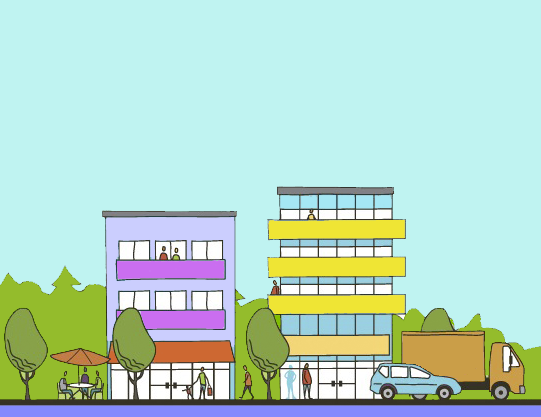
The sanitary and epidemiological assessment of the conditions of insolation. Calculation of insolation
Except water and air, the source of life on the planet is a solar energy. The sufficient level of heat and light provides a comfortable life. The sufficient level of daylight effects on human health and well-being, therefore insufficient level of natural light contributes the bacteria growth that causes to various diseases. Indicator that means and evaluate the sufficiency of solar energy is an insolation. Insolation is direct sunlight illumination of surfaces, territories.
Recently, in terms of density of residential buildings, an importance of insolation is observed. To control for insolation duration is required on the design stage of residential zones, buildings and the reconstruction stage. Particularly in conditions of consolidation of residential buildings, the question of regulatory insolation duration should be complied both for residential apartments of new buildings, and existing residential buildings, as well as play and sports grounds. The sanitary rules and norms regulate the levels of daylight (natural) and lamplight (artificial) of residential and public buildings, education establishments, schools and pre-school establishments. The regulatory document for calculating of insolation duration is DSTU 2.2-27:2010 «The guidance for calculation of insolation of civil objects».
The normative insolation duration should be ensured for the following objects:
The level and duration of insolation depend on geographic location: for northern areas insolation duration is higher than for southern zones. For Ukraine in the warm season from 22 March to 22 September for residential premises and similar premises duration of solar illumination should be at least 2.5 hours per day. In accordance to sanitary rules and norms the orientation of public and residential buildings, the height of which is 5 or more floors, should be take into account the normative calculations of insolation duration.
The sanitary norms of the insolation for pre-schools and kindergartens are approved by the Act № 234 of Ministry of Health Protection of Ukraine. The living rooms, medical and quarantine premises, gymnastics classes and music rooms, premises to work with computers mandatory must be ensured by the daylight. The insolation duration for mentioned above premises is optimal at least three hours per day (the indicator of the minimum daylight coefficient of natural light should be no less than 1.5%). In such premises of pre-schools as showers, swimming pool, toilets, changing rooms and storerooms is not required of the sufficient daylight. Director of kindergarten or pre-school establishments must carry out the laboratory control of insolation at least once a year. To maintain the required level of daylight for playgrounds and sports grounds, it is necessary to grub the thick crown of trees.
Carrying out of the sanitary and epidemiological assessment of the conditions of insolation and illumination, calculation of insolation is a service provided by MCL, LLC during projecting of objects construction and justifying the deviations from state construction norms in the context of sanitary rules and norms. Thanks to productive cooperation with the state institution “O.M. MARZEIEV Institute for public health” NAMSU, MCL, LLC offers the full range of services in the field of sanitary-epidemiologic control and provides the development of individual project solutions and their implementation.